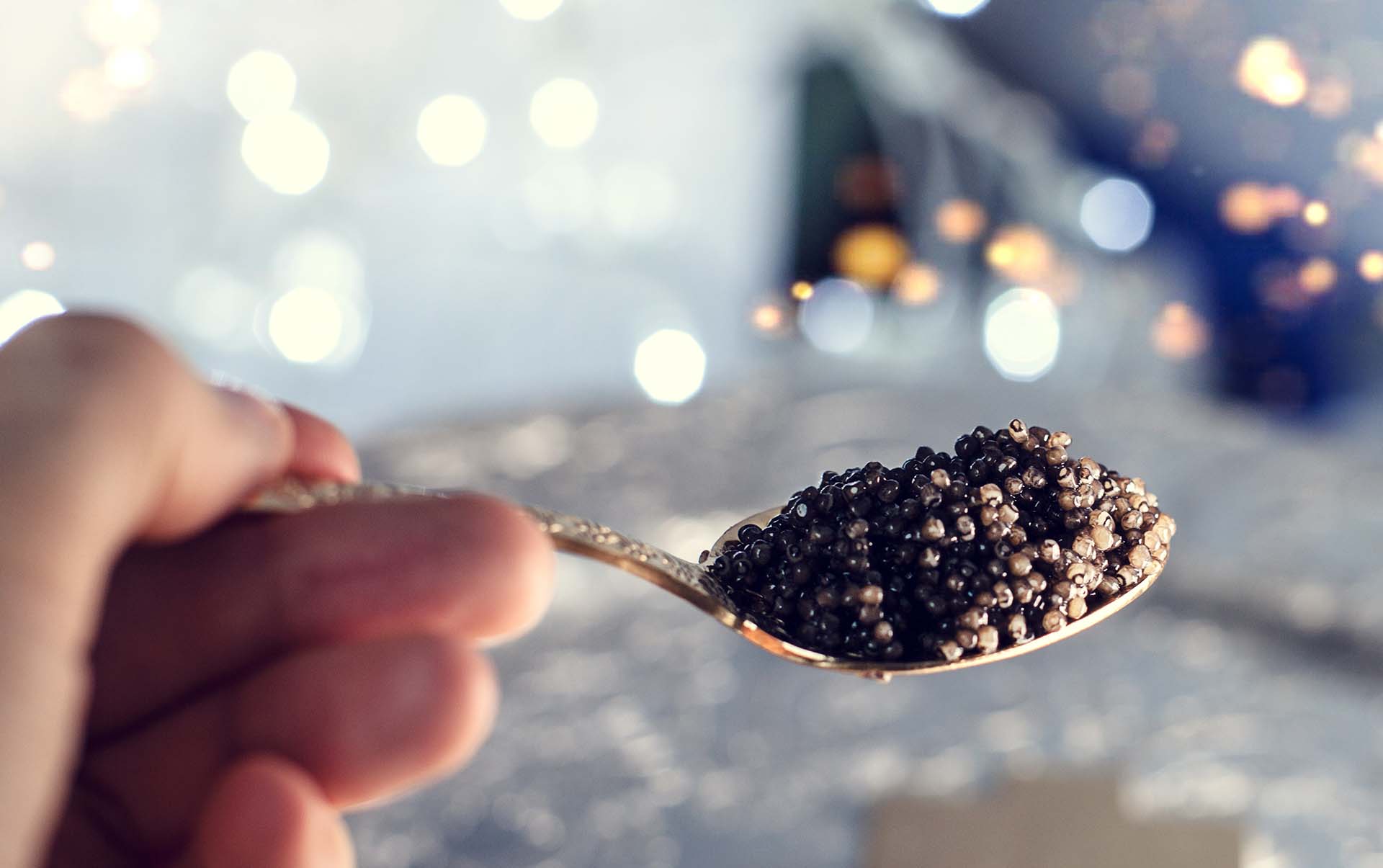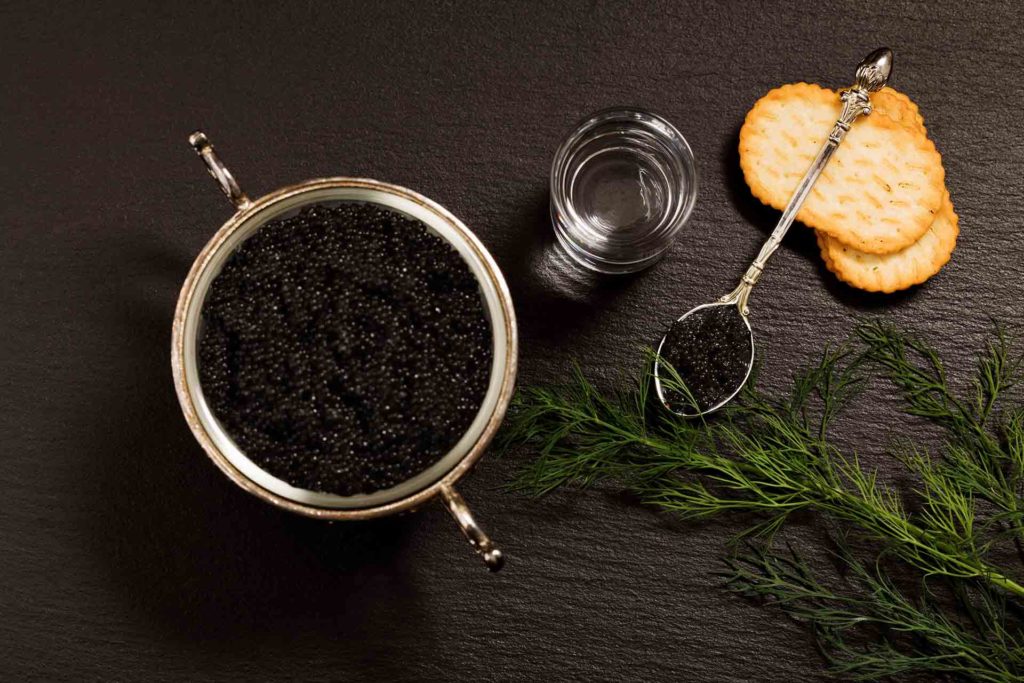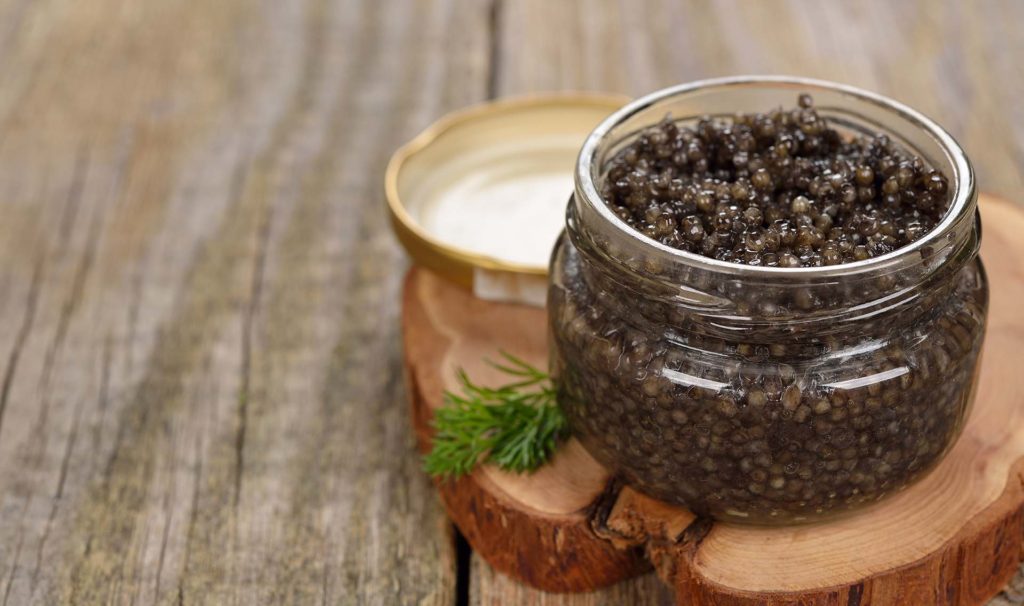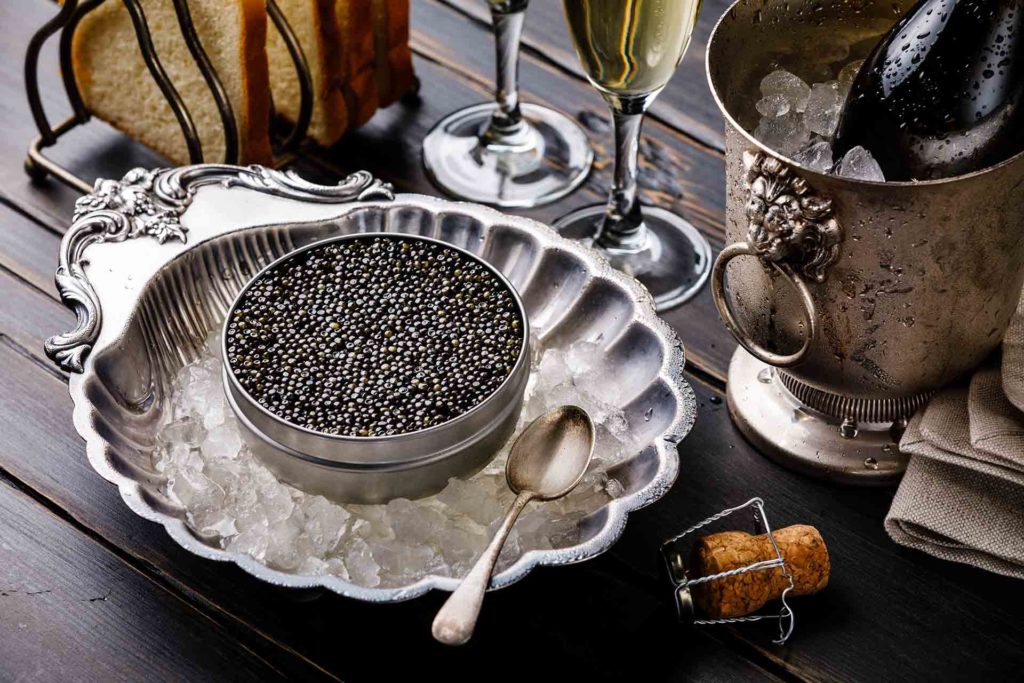
Exploring Kaluga Caviar – What Makes This Delicacy Unique?
Are you wondering why fish roe, especially kaluga caviar is so special? Learn all about this delicacy that will make every bite a unique experience.

If you’ve ever indulged in a delicate spoonful of those glistening pearls, you’ve probably wondered – what fish does caviar come from? This is like a rite of passage into the world of fine dining every true connoisseur should know. So, here’s what lies beneath those shimmering beads – it’s just as fascinating as their taste.
So, what type of fish does caviar come from? The short answer – wild sturgeon from the deep blue of the Caspian and Black Seas. This aquatic family (Acipenseridae) has 28 species, but the most famous caviar comes from beluga, sevruga, Russian, and Siberian sturgeon.
The term can be used for roe of other species as well, including salmon, trout, steelhead, carp, paddlefish, and others. However, that’s not considered true caviar – the real delicacy comes only from the wild sturgeon family.
The history of caviar is as rich as its flavor, deeply rooted in the regions around the Caspian and Black Seas, namely Russia and Iran. For centuries, this delicacy has been a symbol of luxury, elegance, and status, enjoyed by royalty and the elite. Russian tsars served it at grand banquets, while in Iran it was believed that the precious sturgeon roe even had healing properties.
That slightly salty flavor with nutty undertones has persevered through centuries. Unfortunately, most species from the Acipenseridae family are considered endangered today. Conservative efforts were put forward, and the catching and trade of wild sturgeons was prohibited internationally. But don’t worry – you can still buy caviar online or in a store, thanks to sustainable aquaculture. It stays on the menu for those special occasions!

The most sought-after and expensive caviar comes from beluga (Huso huso), the biggest member of the sturgeon family. Actually, it’s considered to be the largest freshwater species in the world, even though it’s anadromous in nature, meaning it ventures out to saltwater too. They can grow to be several meters long, with the biggest catch recorded being 7.2m (23’7 ») and weighing 1,571kg (3,463lbs)! Is that even a fish?
Beluga is a large fish, so it only makes sense that its roe is also impressive in size. The pearls range in coloration from gray to particularly dark, so this delicacy is sometimes called black caviar.
The rich taste is not the only thing that makes it highly sought-after. In fact, beluga can live around 100 years, so it takes time for females to reach maturity, around 25 years, to be exact. So, the whole process is quite long, and there’s a lot of care involved, making this type of caviar that much rarer and, therefore, alluring. It’s literally black gold!

Among sturgeons, sevruga (Acipenser stellatus) is the smallest one, but it can still reach around 2m (7′) in length. Being tiny in this aquatic family has a whole other meaning! Sevruga is also known as the starry sturgeon because of the star-like bony plates it has along the body. Here are a few other identifying features:
Sevruga has a lifespan of about 25 years, reaching maturity after 8 years. As the fish is pretty slim in build, the roe is also on the smaller side, usually around 2mm in diameter. Visually, these pearls are striking, with colors ranging from light gray to consistent charcoal. Those who like caviar and had the pleasure of trying different varieties find that sevruga is a bit saltier, but there’s a creamy undertone that’s pretty hard to resist.

Russian sturgeon (Acipenser gueldenstaedtii) is another member of this family that lurks around the region of the Black and Caspian Seas. It regularly ventures out in the adjacent rivers, and it’s known to be quite a long-distance swimmer, reaching Central Europe through the Danube. Compared to other sturgeons, this species can be quickly recognized thanks to its very short, rounded snout.
The caviar that comes from the Russian sturgeon is called osetra. These fish take their sweet time to mature and reproduce, so the delicacy is rare and, therefore, expensive. The pearls can be a deep brown color, but when the specimen is older, it’s a golden hue. These lighter, glistening eggs are more sought-after as they have the best flavor.

Siberian sturgeon (Acipenser baerii) is native to the icy rivers of the region, such as Ob, Kolyma, Lena, and Yenisei. Just like other members of this fish family, they’ve got quite an impressive size in the wild, weighing up to 200kg (440lb).
The lifespan of Siberian sturgeons is around 60 years, and female specimens reach maturity in about 8 years. The pearls range in color, including black, dark brown, and gray hues. The taste is super rich and consistent, with a creamy undertone. Actually, it’s quite similar to beluga black caviar, but it’s much more affordable – a win-win scenario!

So, we’ve answered the question – what kind of fish does caviar come from? Of course, there are many other types, but these are the icons of fine dining and luxury. But even more important than knowing your pearls is knowing where to purchase caviar online. K&Cie Caviars is here to cut that search short – our caviar online store offers the finest varieties delivered right to your doorstep. Treat yourself to a taste of luxury – because you deserve it!
Blogues connexes

Are you wondering why fish roe, especially kaluga caviar is so special? Learn all about this delicacy that will make every bite a unique experience.

What makes osetra caviar unique? From its rich flavor to its luxurious texture, learn all about this delicacy and enjoy every bite.

Wondering whether eating fish roe has any health benefits? Learn all about caviar nutrition and how it can boost your well-being.
Plan du site
Société
K&cie Sàrl
Route de Crassier 61
1299 Crans-près-Céligny
TVA CHE-383.472.711
Contatez nous
Droits d'auteur 2023, K&cie Sàrl, Tous droits réservés.
Développé par Made Online